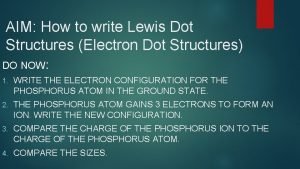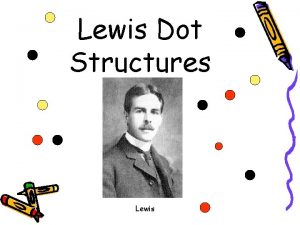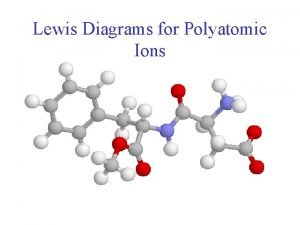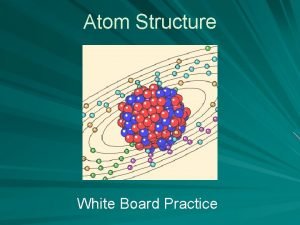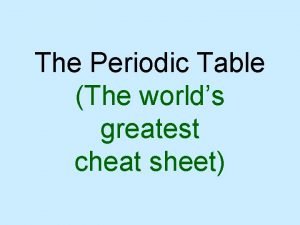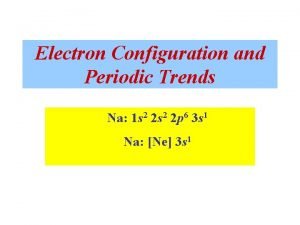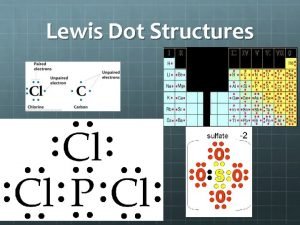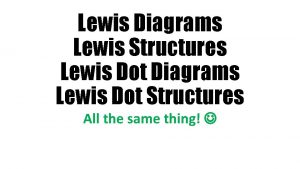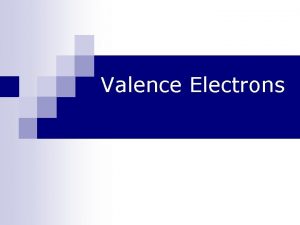Ions Lewis Dot Structures Electrons Valence electrons electrons








- Slides: 8

Ions & Lewis Dot Structures

Electrons Valence electrons – electrons in the highest occupied energy level of an element’s atoms Outermost Only energy level the electrons in the s & p orbitals Remember Bohr Diagrams?

Valence Electrons We can also use the group number as a shortcut to determine the number of valence electrons: Lithium: Group 1: 1 valence electron Fluorine: Group 17: 7 valence electrons Aluminum: Group 13: 3 valence electrons Valence electrons are the only electrons involved in creating chemical bonds. Lewis Dot Structures show just the valence electrons.

Lewis Dot Structures Element symbol is drawn with dots surrounding it representing valence electrons. Move clockwise around the atom adding a dot for each electron

Lewis Dot Structures All elements within a group have the same valence electrons, therefore the same electron dot structure.

Octet Rule Octet rule - When forming compounds all elements want to achieve the electron configuration of a noble gas. Everyone wants 8 electrons!!!! (except H, He, Li, Be and B they only need 2) During reactions: Metal atoms tend to LOSE electrons Nonmetal atoms tend to GAIN electrons.

Cation When a metal loses an electron, it forms a cation. Cation Na· · - positively charged ion Na+ + e- 11 protons (+) 10 electrons (-) Sodium Ion +1 Mg· Mg 2+ + 2 e- Magnesium Ion 12 protons (+) 10 electrons (-) +2

Anion When a nonmetal gains an electron, it forms an anion. Anion - negatively charged ion + e- 17 protons (+) 18 electrons (-) -1 + 2 e- 8 protons (+) 10 electrons (-) -2
